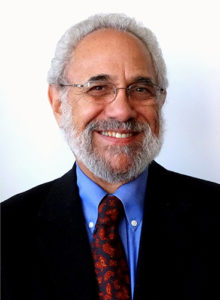Over the past 40 years or so, there has been a dramatic shift in the views about the dynamics of families with mentally ill family members, a shift from blaming them to sympathizing with them for the burden they have to bear.

50 years ago, when I was learning to be a clinician, I was taught that families were largely the cause of the mental illness of their children. Jason, for example, a teenager I treated at an excellent residential treatment center, often erupted in anger and cut his arms from time to time as self-punishment. His parents were divorced and re-married and, even though they tried to cooperate regarding Jason, the old angers between them frequently resurfaced. Conclusion: their dysfunctional relationship early in Jason’s life was the primary reason for Jason’s borderline personality disorder. Or Stephen, another teenager on my caseload, was diagnosed with childhood schizophrenia (a diagnostic category abandoned long ago and replaced with “pervasive developmental disability”). His bizarre behavior began when he was about three. His mother was very anxious about him and very protective. His father was passive and distant. Conclusion: she was a schizophrenogenic mother.
At that time there were two dominant schools of thought about mental disorders: psychodynamic and family dynamic. According to most psychodynamic theories, mental illness reflected a failure of child development due to inadequate parenting. I was taught that the earlier the parental failure was the more severe the mental illness would be. Failures in infancy would result in psychosis, just past infancy in borderline personality disorder, and failures between two and five would result in neurosis. The most extreme form of this view was Bruno Bettleheim’s theory that autism was caused by a cold mother’s death wish for her child in infancy. Other theorists did not go nearly that far, but the finger was usually pointed at the mother, and the expectations that emerged for mothers were so extreme that Donald Winnicott, a British psychoanalyst who eschewed orthodoxy, felt it necessary to develop the compassionate concept of a “good enough mother”. What a relief for mothers!
There is a similar psychodynamic theory about the origin of addiction in the relationship between mother and child in early life and failures of attachment.
Family dynamic theories of mental illness tended to see the family member with a mental illness not as an individual with mental illness but as the “identified patient” in a dysfunctional family. The family is ill, not the individual. There are many theoretical formulations along these lines. The family is misstructured. The family suffers from miscommunication. The family problems are multi-generational. At the extreme, Murray Bowen maintained that it took four generations of family dysfunction to create a schizophrenic.
Bowen and other family therapists viewed addictions in much the same way—as reflections of dysfunctional families.
Looking back, I am stunned and a bit ashamed that I and many, many others believed this sort of thing. I guess we were convinced that psychotherapy and family therapy helped—as they often did—and that therefore the underlying theories must be correct. But we also believed that medication therapy helped. Shouldn’t we have wondered a bit more about the organic roots of mental illness than many of us did at the time.
Towards the end of the 1970s and into the 1980s families began to revolt against the idea that they were to blame for their children’s mental illness. Parents of autistic children, who were deeply offended by Bettleheim’s accusation that they were as cold as refrigerators and that they wished their children dead, insisted that autism is not a mental illness at all, that it is a developmental disability, no more caused by the parents than is limited intelligence. At around the same time, families of people with schizophrenia, largely through NAMI, insisted that schizophrenia was a genetic brain disease that they did not cause. They focused on the burden that they had to bear as caregivers to family members who were profoundly dysfunctional and needed considerable family support just to survive.
Some professionals began to see it the same way. They were struck by the clear organic component of schizophrenia. Studies, for example, of twins separated at birth showed that if one identical twin developed schizophrenia it was likely the other did too, despite being raised by different parents in different living environments.
Some professionals were also struck by how difficult it is to be the parent of a person with schizophrenia—the emotional cost, the financial cost, the disruption of careers, the fragmentation of families.
In addition, it began to become clear that relating to families as if they were to blame created a tremendous barrier to an effective relationship between families and therapists. This was noted, for example, in a brilliant paper that Ken Terkelsen wrote in 1983, in which he called for a new approach to working with families—a compassionate, collegial approach instead of an approach that reinforced their guilt and shame about having a severely mentally ill child.
Similar lines of thought began to emerge regarding emotionally disturbed children and their families. Family groups, such as Family Ties in New York, formed around the country, and parents fought against the accusation that they are to blame for their child’s suffering. They insisted that they be treated as allies in the treatment of their children and argued for a change in mental health policy emphasizing family support.
This compassionate view of families, of the burden that they bear, and of their need for support is now widespread, though, of course, not universal among mental health professionals.
But there is another perspective that has emerged that once again points the finger, at least partially, at the family contribution to emotional disturbance, mental illness, and addiction. That is the perspective that emerges from the studies of adverse childhood events (ACES).
According to that perspective, children who live in troubled families—families that are violent or in which there is substance abuse or in which there is severe mental illness—are more likely to develop mental disorders, addictions, and even physical illnesses in later childhood and in adulthood.
This perspective is at the heart of the modern hope for the prevention of mental and substance use disorders. Reduce the risks to children by diminishing adverse parental behavior.
Of course, this is not at all the same as saying that all or even most mental problems are caused by parents. But it does call for recognition of the toxic trauma that children may experience in their families and its impact on their later life.
It’s also important, I think, that even though there has been increasing acceptance of the idea that addiction is a brain disease and recognition of the burden addiction places on families who love and want to help their children, siblings, lovers, and spouses, there has also been an elaboration of views about addiction as a condition that involves entire families. Many addiction recovery organizations talk about six family roles: (1) the person who is addicted, (2) enabler, (3) the scapegoat, (4)the hero, (5) the mascot, and (6) the lost child. The essence of this is that addiction is seen as a family problem.
Where do we stand now? In general, we have made a transition from a toxic view of families to a compassionate view. In general, there is recognition of the tremendous burden that families bear if there are people with severe and persistent mental illnesses and/or substance use disorders within them. In general, we recognize that families need substantial support to bear their burden. And in general, we accept the harsh unavoidable fact that families do sometimes contribute to the mental illness or addictions of their family members.
In this, as in all things human, life is complex and ultimately mysterious. It calls, I think, for humility among the professionals who accept the responsibility to help people with behavioral health conditions and their families.
Michael B. Friedman is a retired social worker who has worked in the field of mental health for over 50 years. He teaches mental health policy at Columbia University School of Social Work and serves as a volunteer social advocate as Chair of the Cognitive and Behavioral Health Advocacy Team of AARP Maryland. His writings can be found at www.michaelbfriedman.com. He can be reached at mf395@columbiauniversity.edu.








According to that perspective, children who live in troubled families—families that are violent or in which there is substance abuse or in which there is severe mental illness—are more likely to develop mental disorders, addictions, and even physical illnesses in later childhood and in adulthood.
Perhaps if both parents have a milder form of the illness (exhibited as violence or substance abuse) is then passed on to the child as a more severe form, and it’s all genetic.